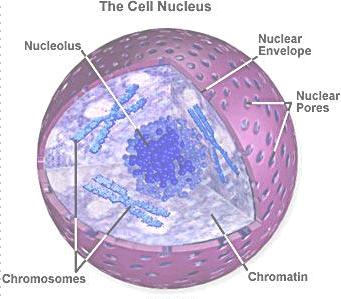Researchers from the Weizmann Institute and Chicago succeeded in deciphering a code, encoded in the sequence of DNA bases, which determines the rules according to which the nucleosomes will be positioned along the DNA
Institute magazine

The genetic material, DNA, is a long molecule organized in the cell nucleus in different units, so that in each unit the DNA is wrapped around a ball of a protein structure, called a nucleosome. The nucleosomes themselves are organized in an orderly structure that covers the entire chromosome. What determines how, when, and where along the DNA nucleosomes will be formed and positioned? Dr. Eran Segal and research student Yair Field from the Department of Computer Science and Applied Mathematics at the Weizmann Institute of Science, together with their research partners from Northwestern University in Chicago, succeeded in deciphering a code, coded in the DNA base sequence, which determines the rules according to which the nucleosomes will be positioned Along the DNA. The findings of their research are published today in the scientific journal Nature.
The exact location where the nucleosomes are is known to be of great importance, because the genetic segment that wraps around the nucleosome is not accessible to many proteins, including various factors responsible for some of the most basic life processes, including replication, transcription, and DNA repair. This means that, for example, a process of genetic expression cannot begin in the nucleosome segment, so that in fact the position of the nucleosomes defines and limits the areas where the most basic processes can take place. This is a significant limitation, because most DNA is wrapped around nucleosomes: the genetic loop of the nucleosome includes about 150 genetic bases (the "letters" that make up the genetic sequence), while between nucleosome and nucleosome there is a free genetic region (where it can start, for example , the transcription process), only about 20 bases long.
For many years there has been a debate in the scientific community on the question of whether the positions of the nucleosomes along the DNA are determined, or not, by the genetic sequence itself. Dr. Segal and the members of his research group were able to prove that the genetic sequence does include a code that tells the DNA where to organize itself into nucleosomes. They also deciphered this code in yeast cells, and were able to predict with great precision, using only the DNA sequence, places where the genetic material would be packed into nucleosomes.
Dr. Segal and his research partners measured about 200 places along the DNA where nucleosomes are found, and asked whether these 200 sequences have similar characteristics. Using a probabilistic analysis of the 200 sequences, they did find that these genetic segments share many common features, thus discovering and elucidating a code that determines where nucleosomes will be located. The code itself is expressed in the existence of a certain genetic "code word", which repeats itself every 10 bases on the genetic sequence, and affects the ability of the DNA to fold into a spherical structure, as is required of the coiled DNA to form a nucleosome. The more such "code words" appear, the greater the chance that in that place the DNA will fold and a nucleosome will be formed. To decipher this code, the scientists built probabilistic models that characterized series of genetic sequences capable of folding and forming the nucleosome loops. After that, they developed an algorithm (a computational recipe) that is able to process the information contained in the genetic sequence of an entire chromosome, and predict in which places, along its length, nucleosomes will form and be located. These predictions were able to predict, with a good degree of accuracy, the location of nucleosomes in a living system, in yeast cells.
The results of the study also showed that throughout evolution, yeast cells have learned to utilize the nucleosomal code to assist themselves in many basic processes. For example, one of the great mysteries in molecular biology is how cells manage to direct the transcription factors precisely to certain sites on the DNA, to which it is important for them to bind, and not to other sites, with the same structural compatibility, that appear by chance in many places along the DNA AN The mystery lies in the fact that these binding sites are short, appear in many places on the chromosome, and do not contain information about the importance of the site. The scientists showed that the essential information about the importance of the site is encoded, at least partially, in the code they found: the important sites are found in genetic segments free from nucleosomes, a fact that allows access to the various transcription factors. On the other hand, the random sites that are characterized by the same structural conformation (and therefore may mislead the transcription factors), are located in the segments where nucleosomes are formed and located, therefore they are not accessible to the transcription factors.
Since the proteins that make up the nucleosomes are among the most conserved in evolution, the scientists hypothesize that the discovered code is also conserved in many other animals, including humans. Many diseases, including cancer, are accompanied and even caused by unwanted changes (mutations) in the organization of the DNA in the chromosomes. These processes may be affected by the accessibility of the DNA to the factors of replication and transcription, and the organization of the genetic material in nucleosomes. Therefore, the scientists believe that the code they discovered may also help in the future in understanding the mechanisms that cause many diseases.
